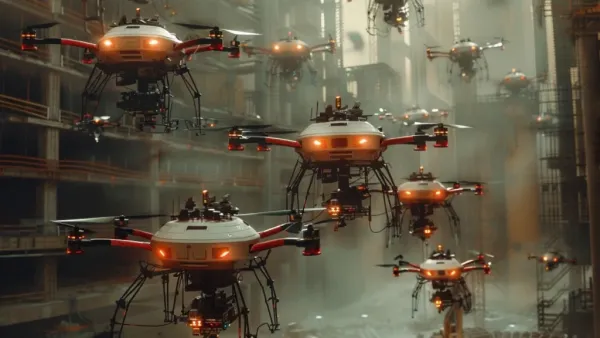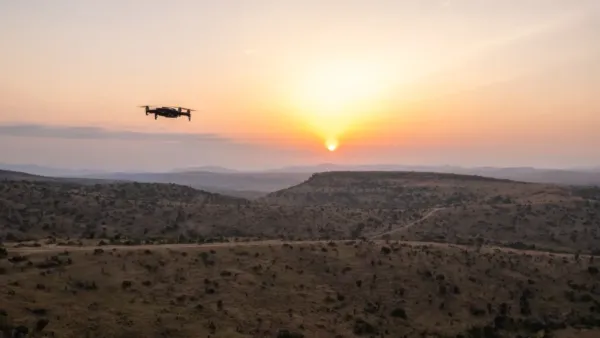
When you observe a group of birds changing directions mid-air in perfect synchronicity or a group of ants constructing elaborate systems underground, all without any leader, you are witnessing nature’s interpretation of decentralized intelligence, as a system where individual units, operating under simple rules, produce complex adaptive behavior. Now, engineers working on robotic systems and researchers in the field of artificial intelligence are headed in that specific direction, designing a new breed of machines: swarm robots.

Swarm robotics is not about designing one super robot intelligence; swarm robots deploy hundreds, if not thousands, of inexpensive small robots that are capable of thinking together. It is a quiet revolution in how we envision automation. Rather than robots that rely on a central controller or operation, swarm robots can collectively decide, adapt to their environment, and even self-organise to achieve a particular task. This shift from individual intelligence to collective intelligence could alter the ways in which factories, disaster scenarios, farms, and even missions to outer space are operationalised. In 2025, as AI and edge computing advance, swarm robotics is moving from research labs to real-world deployment, marking a turning point for industries and scientists alike.
At its most basic level, swarm robotics studies and designs multi-robot systems that cooperate without centralized control. Each robot, or “agent,” acts autonomously but interacts with other robots according to local rules by communicating through sensors, signals, or environmental cues. The idea is straightforward: if every robot can follow a few simple rules and communicate a small amount of information, the group can perform complex tasks like mapping an environment, transporting objects, or building structures.
This design is strongly influenced by swarm intelligence, a biological concept that describes how swarm behaviors emerge in animal groups. For example, bees coordinate to find flowers, and ants divide labor among their colony, etc. Like the examples found in nature, swarm robots can divide labor, adapt to changes, and perform recovery when individual agents are lost. If a robot fails, this collective behavior allows the swarm to reorganize and continue. There is no single point of failure.

These key technologies come together for the swarm:
Swarm robotics is gaining traction in logistics and fulfillment centers, allowing for a fleet of small robots to work together to move packages, manage inventory, and maximize space rather than relying on one large industrial robot. If one robot goes offline, the others will continue without disruption, which can improve resilience and uptime. Companies trying this approach also find that it is scalable: if you need more capacity, simply add more robots to the swarm.
In India and other agrarian economies, swarm drones and ground robots are being designed to monitor crops, plant seeds, and apply fertilizers with precision. Swarms can cover large fields without the requirement that farmers manage each unit. What is more, for smallholders, decentralized systems mean cheaper and a fleet of less expensive cooperative robots rather than a single expensive machine.
Swarm robots can be deployed to map debris, find survivors, or track gas leaks when a building collapses or becomes hazardous for humans. Researchers at the Indian Institute of Science and IITs are developing small robots that can swim through rubble and share real-time information, enabling emergency personnel to plan a course of action without having to set foot in a dangerous area.

Swarm drones can provide continuous monitoring of large areas, from forest fires to pollution data collection. They can note temperature fluctuations, chemical leakage, and/or illegal mining activities when humans cannot enter the dangerous environment.
Swarm systems are being researched by NASA researchers and ISRO researchers for planetary exploration purposes. For example, a team of small rovers could map Mars or the Moon more safely and quickly than a single rover. The small rovers would each be able to explore independently but share their collected data to create a collective map and reasoning with the mapping process, to track and locate food (i.e., exploring anthropogenics), inspired by how ants work to forage for food.
India’s robotics ecosystem is gradually entering this area. At organizations like IIT Delhi, IISc Bengaluru, and IIIT Hyderabad, researchers are exploring bio-inspired algorithms and swarm simulations for broad reusability.
Startups such as GenRobotics and The ePlane Company are looking into multi-drone coordination for delivery and inspection challenges. Meanwhile, Systemantics and Gade Autonomous Systems are developing modular robotic systems, and swarm logic could soon be a feature of manufacturing and defense logistics.
Meanwhile, government-backed initiatives, such as Make in India and Digital India, are indirectly responding to the ecosystem – supporting hardware innovations, artificial intelligence, and low-cost computing infrastructure. As prices fall and local robotic designs develop, swarms for agriculture, defense, and logistics are becoming ever more realistic.
Swarm robotics does not intend to replace humans, but instead, it represents an opportunity to learn from nature’s most beautiful systems and augment human capability. It is a narrative of humility in technology: understanding that intelligence does not have to be singular or centralized. In a beehive, in a city, or in a warehouse, intelligence emerges from connectedness.

As India and the world enter the next big phase of distributed AI, swarm robotics represents a vision for a future where machines are not just working for us, but machines are working with machines, for the mutual benefit of an entire system. In that collaboration is both the promise and the poetry of decentralized intelligence being created.